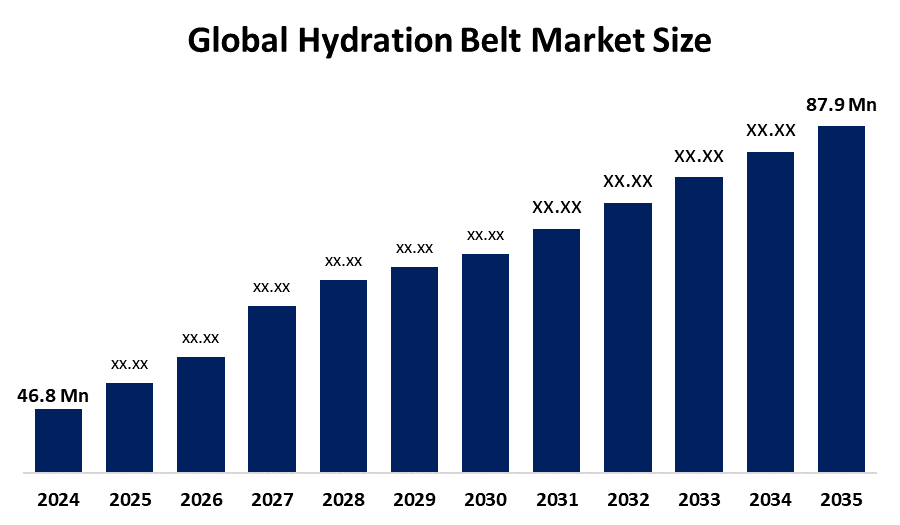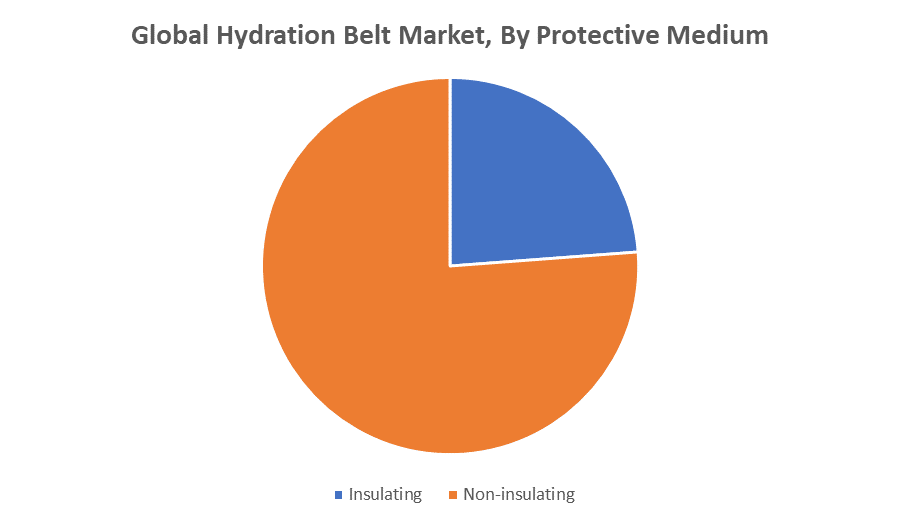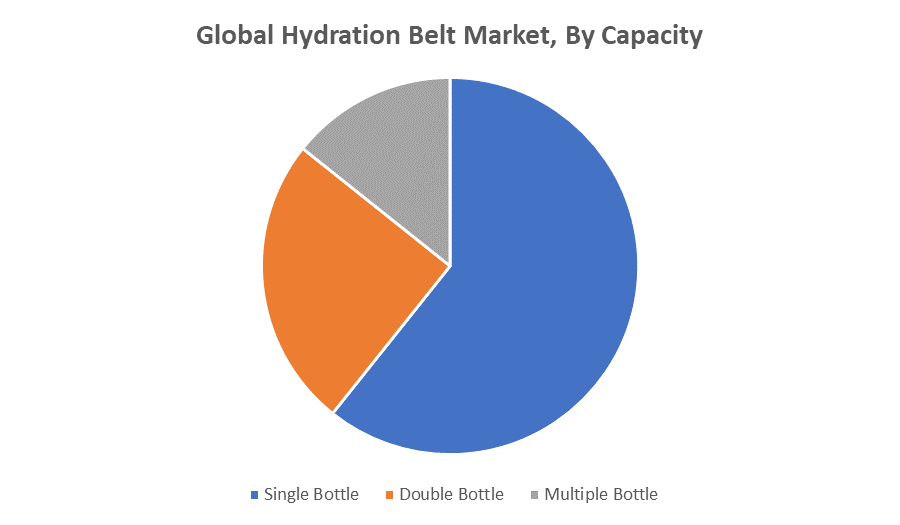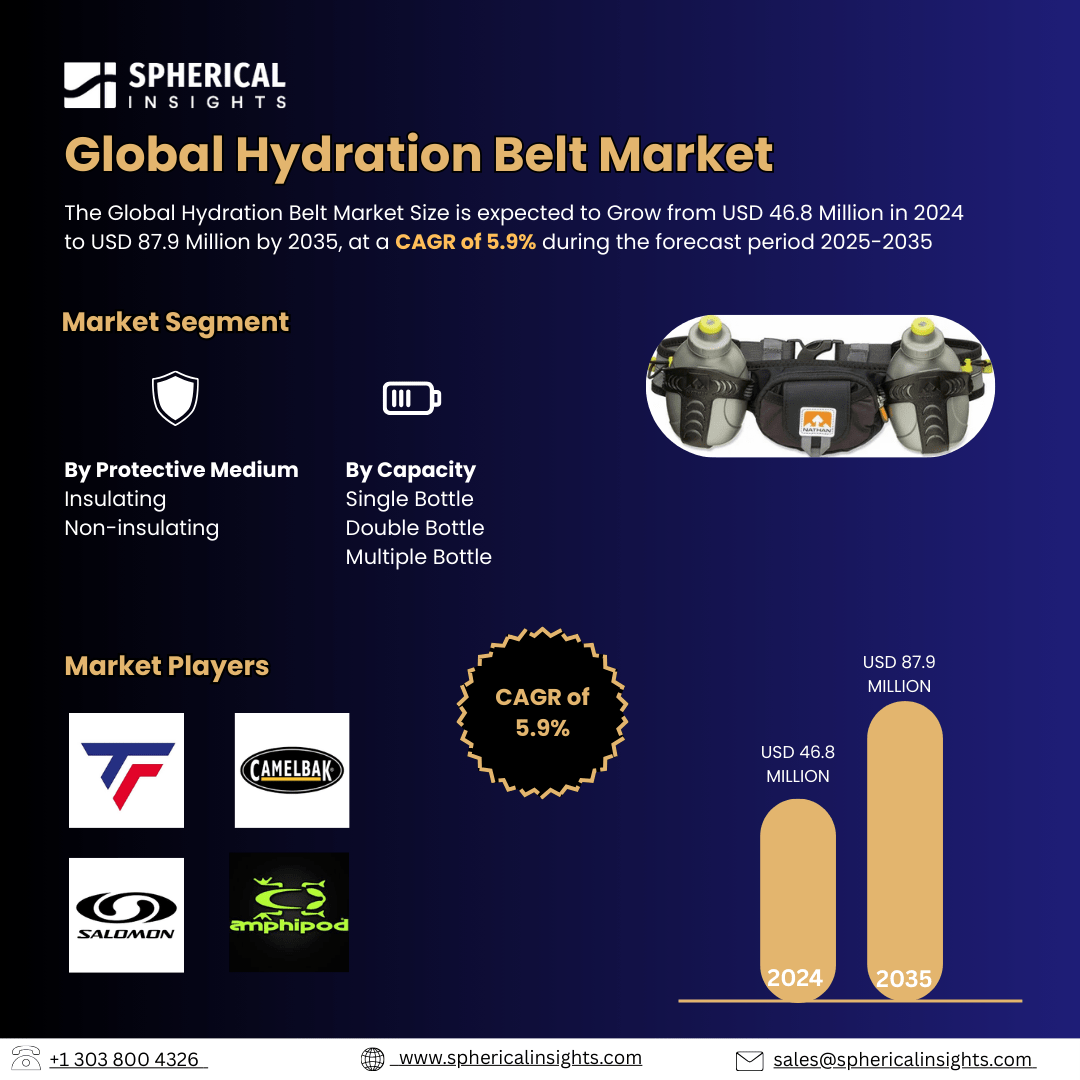Global Hydration Belt Market Insights Forecasts to 2035
- The Global Hydration Belt Market Size Was Estimated at USD 46.8 Million in 2024
- The Market Size is Expected to Grow at a CAGR of around 5.9% from 2025 to 2035
- The Worldwide Hydration Belt Market Size is Expected to Reach USD 87.9 Million by 2035
- Asia Pacific is expected to grow the fastest during the forecast period.

Hydration Belt Market
The hydration belt market focuses on products designed to offer convenient, hands-free access to water during physical activities such as running, hiking, cycling, and walking. These belts are worn around the waist and typically feature one or more water bottles along with storage compartments for small personal items like phones, keys, and energy gels. They are popular among fitness enthusiasts, athletes, and outdoor activity participants who require hydration without interrupting their performance. Hydration belts come in various designs and capacities to suit different activity levels, with options ranging from lightweight, minimalist styles to more robust models with added storage and insulation features. Materials used are often lightweight, durable, and moisture-wicking to enhance comfort and usability. The market includes a wide range of products from both established sporting goods brands and emerging manufacturers, offering consumers a variety of choices in terms of features, functionality, and price points, catering to both casual users and professionals.
Attractive Opportunities in the Hydration Belt Market
- Allowing consumers to choose belt designs, colors, and features tailored to their specific preferences can enhance user satisfaction and build brand loyalty.
- Collaborating with marathons, adventure races, and other outdoor events can increase brand visibility and drive targeted sales directly to fitness enthusiasts.
- Collaborating with fitness influencers and integrating hydration belts with fitness apps or wearable technology can offer a connected and interactive user experience, making the product more appealing.
- Developing hydration belts using sustainable or recycled materials appeals to environmentally conscious consumers and taps into the growing demand for eco-friendly sports accessories.
Global Hydration Belt Market Dynamics
DRIVER: Growing popularity of marathons
Increasing health awareness and a rising interest in fitness activities such as running, hiking, cycling, and walking have significantly boosted demand for convenient hydration solutions. The growing popularity of marathons, trail races, and outdoor recreational events has also led to a greater need for functional accessories like hydration belts. Technological advancements in design and materials such as lightweight fabrics, ergonomic fits, and moisture-wicking features have improved comfort and usability, making these products more appealing. Additionally, the integration of features like smartphone holders, reflective strips for safety, and storage compartments for energy gels or personal items has enhanced their practicality. Social media influence and the trend of documenting fitness journeys have further increased product visibility and consumer interest. The expansion of e-commerce platforms has also made hydration belts more accessible to a global audience, supporting market growth.
RESTRAINT: Availability of alternative hydration solutions
Despite its growth, the hydration belt market faces several restraining factors that may limit its expansion. One major challenge is the availability of alternative hydration solutions, such as handheld bottles and hydration backpacks, which may better suit certain user preferences or activities. Some consumers find hydration belts uncomfortable, especially during long-distance runs, due to issues like bouncing, chafing, or uneven weight distribution. Additionally, improper fit and limited adjustability can lead to dissatisfaction, especially among users with varying body types. Price sensitivity is another factor, as high-quality belts with advanced features can be relatively expensive, discouraging budget-conscious buyers. Limited awareness and adoption in less fitness-focused demographics or regions can also slow market penetration. Moreover, durability concerns and the need for regular maintenance or cleaning may deter frequent use. Lastly, fashion-conscious consumers may view hydration belts as unattractive or bulky, opting instead for more discreet or stylish hydration alternatives.
OPPORTUNITY: Partnerships with event organizers
The hydration belt market presents several emerging opportunities beyond the traditional driving factors. One key opportunity lies in product customization, allowing consumers to select belt designs, colors, and features tailored to their specific needs and preferences, enhancing user satisfaction and brand loyalty. Collaboration with fitness influencers and integration with fitness apps or wearable tech can also create a unique selling point, offering a more connected and interactive user experience. Expansion into niche markets, such as travel, military training, or medical use for individuals needing regular hydration, opens additional avenues for growth. Moreover, partnerships with event organizers such as marathons or adventure races can promote brand visibility and drive targeted sales. There's also potential in developing eco-friendly hydration belts using sustainable or recycled materials, appealing to environmentally conscious consumers. Lastly, targeting younger demographics through trend-focused marketing and functional yet fashionable designs could broaden the consumer base and boost long-term market engagement.
CHALLENGES: Intense market competition
One significant challenge is intense market competition, with numerous brands offering similar products, making differentiation difficult and putting pressure on pricing and profit margins. Rapid shifts in consumer preferences also pose a risk, requiring continuous innovation and adaptation in design, features, and aesthetics. Managing supply chains efficiently, especially with rising material and shipping costs, can affect production timelines and overall profitability. Additionally, counterfeit products and low-quality imitations in the market can damage brand reputation and reduce consumer trust. Limited retail shelf space and visibility in physical stores can further hinder market penetration, especially for newer or smaller brands. Another challenge is effectively educating consumers on the benefits and proper usage of hydration belts, particularly in markets where awareness is still low. Ensuring long-term product durability while maintaining lightweight comfort remains a balancing act that continues to test manufacturers.
Global Hydration Belt Market Ecosystem Analysis
The global hydration belt market ecosystem includes raw material suppliers providing fabrics and plastics, manufacturers designing ergonomic and functional belts, and distributors delivering products through retail and e-commerce channels. Consumers, primarily athletes and outdoor enthusiasts, drive demand for convenient hydration solutions. Event organizers, marketing agencies, and technology innovators also support the ecosystem by promoting use and advancing product features. This interconnected network thrives on collaboration and innovation, responding to evolving fitness trends and increasing demand for practical, comfortable hydration accessories.
Based on the protective medium, the non-insulating segment dominated the market with the largest revenue share over the forecast period

Non-insulating hydration belts typically feature simple, lightweight designs without specialized thermal insulation, making them ideal for users engaging in moderate to intense physical activities where weight and breathability are critical. These belts allow easy access to hydration while minimizing bulk and heat retention, which is especially preferred in warmer climates or during high-intensity workouts. Their affordability compared to insulated variants also makes them accessible to a broader consumer base. Additionally, the versatility of non-insulating belts, suitable for various sports and outdoor activities, contributes to their strong market performance and continued demand growth globally.
Based on the capacity, the single bottle segment dominated the market with the largest revenue share during the forecast period

Single bottle hydration belts are favored for their compact design and lightweight nature, making them ideal for runners and fitness enthusiasts who prefer minimal bulk while staying hydrated. These belts offer sufficient water capacity for shorter workouts and daily activities, balancing convenience and functionality. Their ease of use and affordability make them popular among a wide range of consumers, contributing significantly to market growth. Additionally, the growing trend of quick, high-intensity training sessions has increased demand for single bottle belts, reinforcing their dominant position in the market.
North America is anticipated to hold the largest market share of the hydration belt market during the forecast period
North America is anticipated to hold the largest market share in the hydration belt market during the forecast period. This dominance is driven by the region’s strong fitness culture, widespread participation in outdoor sports and recreational activities, and growing awareness about the importance of proper hydration. Additionally, the presence of established sportswear brands and advanced retail infrastructure, including both physical stores and e-commerce platforms, supports widespread product availability. The increasing popularity of marathons, trail running, and adventure races further fuels demand for hydration belts. Furthermore, consumers in North America often seek high-quality, innovative products with enhanced features, contributing to the region’s significant revenue share in the global market.
Asia Pacific is expected to grow at the fastest CAGR in the hydration belt market during the forecast period
Asia Pacific is expected to grow at the CAGR in the hydration belt market during the forecast period. This rapid growth is driven by rising health awareness, increasing participation in fitness and outdoor activities, and expanding urban populations in countries like China, India, Japan, and Australia. The region’s growing middle class with higher disposable incomes is fueling demand for sports and wellness products, including hydration belts. Additionally, the proliferation of e-commerce platforms and greater access to global brands make these products more accessible. Increasing government initiatives to promote active lifestyles and sports events also contribute to the market’s expansion in the Asia Pacific, positioning it as the fastest-growing region in the global hydration belt market.
Key Market Players
KEY PLAYERS IN THE HYDRATION BELT MARKET INCLUDE
- Nathan Sports
- CamelBak
- Salomon
- Amphipod
- Ultimate Direction
- FuelBelt
- Fitletic
- Decathlon
- The North Face
- Others
Market Segment
This study forecasts revenue at global, regional, and country levels from 2020 to 2035. Spherical Insights has segmented the hydration belt market based on the below-mentioned segments:
Global Hydration Belt Market, By Protective Medium
- Insulating
- Non-insulating
Global Hydration Belt Market, By Capacity
- Single Bottle
- Double Bottle
- Multiple Bottle
Global Hydration Belt Market, By Regional Analysis
- North America
- Europe
- Germany
- UK
- France
- Italy
- Spain
- Russia
- Rest of Europe
- Asia Pacific
- China
- Japan
- India
- South Korea
- Australia
- Rest of Asia Pacific
- South America
- Brazil
- Argentina
- Rest of South America
- Middle East & Africa
- UAE
- Saudi Arabia
- Qatar
- South Africa
- Rest of the Middle East & Africa






